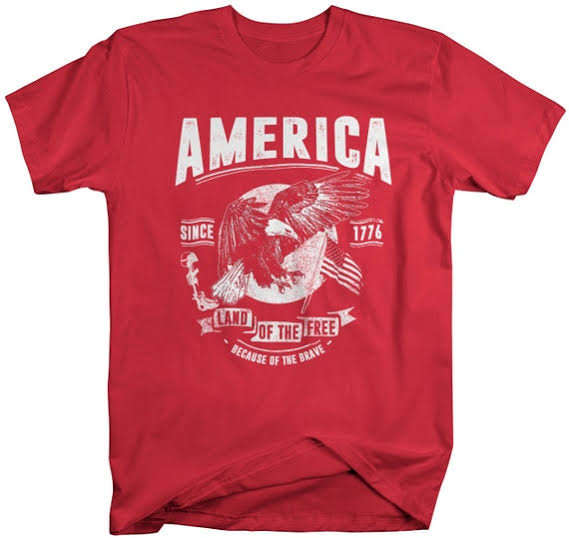Standing out from the crowd requires a well-defined and executed marketing strategy. To succeed, retailers must capture the attention of potential customers, build strong brand loyalty, and drive sales. With increasing competition from both online and offline retailers, it is more important than ever to craft effective marketing strategies that not only attract customers but also retain them.
1. Omnichannel Experience
Seamless Integration: One of the most effective ways to reach modern consumers is by creating a seamless and consistent customer experience across all channels, including online, in-store, and mobile. Consumers today expect to interact with brands through multiple touchpoints. This involves integrating online and offline channels, such as offering in-store pickup for online orders, utilizing QR codes in physical stores to provide additional product information, or using online platforms to promote in-store events.
Personalized Experiences: Consumers appreciate brands that understand their preferences. By leveraging customer data, retailers can personalize the shopping experience. This could include personalized product recommendations, targeted promotions, and customized communication through email and social media. Retailers who pay close attention to customer behavior and tailor experiences accordingly will see higher engagement and conversion rates.
2. Content Marketing
High-Quality Content: Content marketing plays a critical role in engaging potential customers and building brand credibility. By creating valuable and engaging content that resonates with your target audience, you can establish authority and trust. This could include blog posts about industry trends, informative social media content, high-quality videos demonstrating product use, and infographics that simplify complex information.
Focus on Storytelling: Customers connect with brands that have a compelling story. Sharing your brand’s journey, values, and mission can help build strong emotional connections. This could include highlighting how your products are made, showcasing customer testimonials, or featuring behind-the-scenes stories about your employees and company culture.
3. Social Media Marketing
Active Engagement: A strong social media presence is essential for retailers looking to expand their reach. Maintaining an active presence on platforms relevant to your target audience helps you stay top-of-mind. Posting consistently and engaging with followers creates a community around your brand.
Engage with Customers: Social media is not just about posting content—it’s about interaction. Responding to comments, messages, and reviews promptly and professionally strengthens customer relationships. Even negative feedback presents an opportunity to demonstrate excellent customer service and commitment to improvement.
Run Contests and Giveaways: Everyone loves a good giveaway. Contests and giveaways are excellent tools for increasing engagement, expanding reach, and generating excitement around your brand. Encouraging user-generated content—such as customers posting photos of your products—can further increase visibility.
Utilize Influencer Marketing: Partnering with influencers is a powerful way to reach a wider audience. Collaborating with influencers who align with your brand values can increase credibility and encourage their followers to trust and purchase from your brand.
4. Email Marketing
Build an Email List: Email marketing remains one of the most effective ways to nurture leads and retain customers. Collect email addresses through website sign-ups, in-store promotions, and social media campaigns.
Segment Your Email List: Not all customers are the same, so your email campaigns should not be one-size-fits-all. Segmenting your email list based on customer behavior, preferences, and demographics allows for targeted messaging, leading to higher engagement and conversions.
Create Engaging Email Content: A compelling email must include an eye-catching subject line, visually appealing design, and valuable content. Offering exclusive discounts, personalized recommendations, and product updates can encourage customers to take action.
Track Email Performance: Monitoring metrics like open rates, click-through rates, and conversion rates helps refine your email strategy and improve future campaigns.
5. Loyalty Programs
Reward Repeat Customers: A well-designed loyalty program can incentivize repeat purchases and foster brand loyalty. Offering points for purchases, referrals, and social media engagement encourages continued interaction with your brand.
Offer Exclusive Benefits: Providing VIP customers with exclusive discounts, early access to sales, and personalized offers strengthens customer relationships. Special perks create a sense of exclusivity and appreciation.
Collect Customer Feedback: Loyalty programs are also a great way to gather insights. Conducting surveys or requesting reviews from program members helps retailers identify areas for improvement.
6. In-Store Experience
Create an Engaging Atmosphere: Even in the digital age, the physical retail experience remains crucial. A visually appealing store layout, attractive product displays, and friendly staff can create a memorable shopping experience.
Provide Excellent Customer Service: Customers remember outstanding service. Training employees to provide personalized recommendations, assist with queries, and create a welcoming environment enhances customer satisfaction and retention.
Leverage Technology: Incorporating technology, such as interactive kiosks, augmented reality displays, and mobile checkout systems, improves efficiency and customer engagement. Self-checkout options, digital price tags, and AI-powered assistance can enhance the shopping experience.
7. Data Analysis and Insights
Track Key Metrics: To make informed decisions, retailers must track essential performance indicators such as website traffic, conversion rates, customer acquisition costs, and customer lifetime value. Keeping a close eye on these metrics helps identify trends and areas for improvement.
Analyze Customer Data: Understanding customer behavior through data analysis allows retailers to fine-tune marketing strategies. This includes tracking purchase patterns, identifying customer preferences, and predicting future trends.
Pay Attention to Detail: The success of a marketing strategy often hinges on the smallest details. From refining ad copy and social media captions to adjusting store layouts based on customer flow, attention to detail is paramount. A data-driven approach ensures that no opportunity is overlooked.
FAQs:
1. Why is having a marketing strategy important for retailers?
A well-defined marketing strategy helps retailers stand out in a competitive market, attract new customers, build brand loyalty, and drive sales. With increasing competition from both online and offline retailers, a strategic approach ensures sustained business growth.
2. What is an omnichannel experience, and why is it important?
An omnichannel experience integrates online, in-store, and mobile interactions, providing a seamless customer journey. This approach enhances convenience, improves customer satisfaction, and increases brand engagement by allowing shoppers to interact with a retailer through multiple touchpoints.
3. How can retailers personalize the customer experience?
Retailers can personalize shopping experiences by leveraging customer data to offer targeted promotions, personalized product recommendations, and customized communication. Using email marketing, AI-driven tools, and loyalty programs helps tailor experiences to individual preferences.
4. What type of content should retailers create for marketing?
Retailers should create high-quality, engaging content, including blog posts, social media updates, instructional videos, product demonstrations, customer testimonials, and infographics. A strong storytelling approach helps customers connect emotionally with the brand.
5. How can social media marketing benefit retail businesses?
Social media marketing helps retailers increase brand visibility, engage with customers, and drive traffic to their online and physical stores. Running contests, responding to customer inquiries, collaborating with influencers, and sharing valuable content enhance brand awareness.
6. What are the key elements of an effective email marketing campaign?
A successful email marketing campaign includes:
- A well-segmented email list for targeted communication.
- Compelling subject lines to increase open rates.
- Engaging content, such as promotions, personalized recommendations, and product updates.
- Performance tracking through metrics like open rates and click-through rates.
7. How do loyalty programs help retailers increase customer retention?
Loyalty programs reward repeat customers with points, discounts, and exclusive offers, encouraging continued purchases. Additionally, they provide valuable insights into customer preferences and purchasing behavior.






